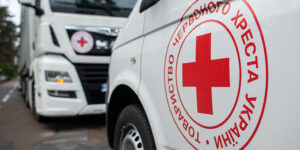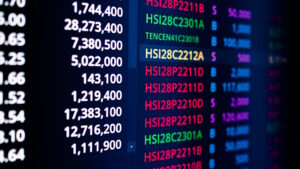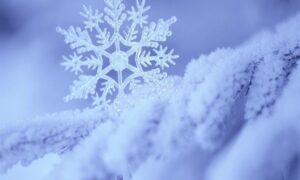
According to Serbian Economist, China’s CCSC Technology International Holdings Limited has announced that construction of a cable factory and logistics center in the Serbian municipality of Merosina is scheduled to begin in January 2026.
The company had previously expected work to start in November 2025, but has postponed the deadline. The new schedule was announced during the presentation of financial results for the first half of fiscal year 2026, which ended on September 30, 2025.
As noted in the announcement, the project in Merosina is scheduled for completion at the end of 2026. Once completed, the facility is expected to become the company’s logistics and manufacturing hub for its European operations.
The investment has been discussed with local authorities before: it was reported that the Chinese partners’ enterprise in Merosina could provide about 200 jobs.
CCSC specializes in the production of cables, connectors, and cable harnesses, which are used, in particular, in the automotive industry, robotics, and medical equipment.

The Ukrainian Red Cross (URC) has set up heating centers in settlements in the Kyiv region.
“After another massive Russian attack on Kyiv and the Kyiv region, many people were left without electricity, water, and heat. In order to support the population in the absence of basic utilities, the Ukrainian Red Cross has set up heating points in settlements in the Kyiv region,” the UKR reported on Facebook on Sunday.
Two mobile heating points, set up by volunteers from the rapid response team of the National Committee of the Ukrainian Red Cross Society, operated in Brovary and Zazimye for two days. During this time, more than 100 people sought help. Here, they could warm up, drink hot beverages, charge their mobile phones, and rest.
In Vyshgorod, two heating points set up by the Kyiv Regional Rapid Response Team of the Ukrainian Red Cross have been operating for the second day in a row, providing all the necessary assistance to local residents.

Ukraine ranks first in Europe in terms of human and brain drain, according to the Experts Club analytical center, citing the 2024 Human Flight and Brain Drain ranking. According to the ranking, Ukraine has a score of 8.4 points (on a scale of 0-10, where a higher value indicates a more pronounced outflow), based on data from The Global Economy, which is based on the Fund for Peace indicator.
Ukraine ranks 7th in the global rating, behind six countries: Samoa, Palestine, Jamaica, Eritrea, El Salvador, and Somalia, according to a review by Ukrainian News, citing The Global Economy.

According to The Global Economy, Ukraine’s index was 8.9 points in 2023, and it fell to 8.4 points in 2024.

The visualization of the dynamics of the top 20 countries by GDP at purchasing power parity (PPP) for 1991-2024 from the Experts Club analytical center, which went viral on social media, is generally confirmed by international statistics: in 2024, the world’s largest economies in terms of GDP (PPP) China, the US, and India.
According to World Bank data on GDP, PPP (current international $), in 2024, China’s GDP in PPP was estimated at $38.19 trillion, the US at $29.18 trillion, and India at $16.19 trillion. The top ten economies by this indicator also included Russia (4th place), Japan (5th place), followed by Germany, Indonesia, Brazil, France, and the United Kingdom.
The Experts Club notes that the “race” from 1991 to 2024 reflects a long-term shift in the weight of the global economy towards Asia. At the start of the period, developed economies were the leaders, but then markets with large populations and domestic demand grew rapidly, and China and India gradually established themselves among the leaders.
“GDP at PPP does not show ‘wealth in currency’, but rather the scale of the economy, taking into account how many goods and services can actually be purchased within the country. Therefore, PPP better describes the domestic market and consumption potential, while for foreign trade, debt, and capital inflows, it is important to look at nominal indicators in parallel,” commented Maxim Urakin, founder of the Experts Club analytical center and candidate of economic sciences.
The GDP indicator in PPP terms converts the size of the economy into “international dollars,” taking into account differences in price levels between countries, so that the comparison is more accurate than when converted at market rates.
The video analysis by the Experts Club analytical center is available at the link:

Passenger traffic across the Ukrainian border in the penultimate week of Christmas 2025, from December 20 to 26, jumped by another 21.9% to 685,000, causing queues at the border with Poland, Hungary, and Slovakia, according to data from the State Border Service.
According to them, the number of border crossings for departure increased to 329,000 from 279,000 a week earlier, while the increase for entry was even more significant – to 356,000 from 283,000.
At the same time, the number of vehicles that passed through checkpoints this week also decreased to 129,000 from 140,000 a week earlier, and the flow of vehicles with humanitarian cargo decreased to 440 from 516.
While before Christmas the flow of vehicles entering the country significantly exceeded the flow of vehicles leaving, the picture changed with the start of school holidays and the approach of the New Year. This Saturday, the number of crossings out of the country was 53,000 compared to 36,000 into the country, but overall, the flow decreased significantly compared to the previous Saturday, when 62-63,000 people crossed the border in each direction.
According to the State Border Service, as of 9:00 a.m. on Sunday, there were no queues at the border with Romania and Moldova, while at the borders with three other countries they remained, but were not as long as before Christmas and last weekend.
At the border with Poland, most passenger cars were waiting to cross at the Ustyluh checkpoint – 70. The queue at the Uhryniv and Krakivets checkpoints consisted of 30 cars each, and at the Rava-Ruska and Hrushev checkpoints – 20 cars each. At the same time, 25 buses accumulated at the Krakivets checkpoint and 13 at the Shehyni checkpoint.
Forty cars were waiting to cross the border with Slovakia at the Uzhhorod checkpoint and 25 at the Maly Berezny checkpoint.
At the border with Hungary, the longest queue was at the Tisa checkpoint – 15 cars, while 10 cars accumulated at the Luzhanka and Vilok checkpoints.
The total number of border crossings this week is slightly higher than last year. At that time, 325,000 people left Ukraine in 7 days, and 332,000 entered, and the flow of cars was also lower – 117,000.
Last year, a 12.5% increase in passenger traffic was recorded during this week, and during the New Year week, it fell by 22.7%.
As reported, from May 10, 2022, the outflow of refugees from Ukraine, which began with the start of the war, was replaced by an influx that lasted until September 23, 2022, and amounted to 409,000 people. However, since the end of September, possibly influenced by news of mobilization in Russia and “pseudo-referendums” in the occupied territories, followed by massive shelling of energy infrastructure, the number of those leaving exceeded the number of those entering. In total, from the end of September 2022 to the first anniversary of the full-scale war, it reached 223,000 people.
In the second year of the full-scale war, the number of border crossings to leave Ukraine, according to the State Border Service, exceeded the number of crossings to enter by 25,000, in the third year by 187,000, and since the beginning of the fourth year by 176,000.
As Serhiy Sobolev, then Deputy Minister of Economy, noted in early March 2023, the return of every 100,000 Ukrainians home results in a 0.5% increase in GDP.
In its July inflation report, the National Bank worsened its migration forecast: while in April it expected a net inflow of 0.2 million people to Ukraine in 2026, it now forecasts a net outflow of 0.2 million, which corresponds to the estimate of the net outflow this year. “Net return will only begin in 2027 (about 0.1 million people, compared to 0.5 million in the previous forecast),” the NBU added and confirmed this forecast at the end of October. In absolute terms, the National Bank estimates the number of migrants currently remaining abroad at about 5.8 million.
According to updated UNHCR data, the number of Ukrainian refugees in Europe as of December 11, 2025, was estimated at 5.311 million (5.331 million as of November 14), and 5.860 million (5.850 million) worldwide.
In Ukraine itself, according to the latest UN data for September this year, there are 3.694 million internally displaced persons (IDPs), compared to 3.340 million in July.

The Ukrainian Hydrometeorological Center warns of dangerous and extreme weather conditions across Ukraine on Sunday.
“On December 28, there will be icy roads, heavy snow at night in the Sumy, Poltava, and Kharkiv regions, and wet snow sticking to the ground during the day on the left bank; on the right bank, there will be wind gusts of 15-20 m/s at night and during the day, as well as blizzards (level I danger, yellow); in the west, during the day and in Vinnytsia and Odesa regions, strong wind gusts of 25-28 m/s (level II danger, orange),” the report says.
Weather conditions may complicate the work of energy, construction, and utility companies, as well as transport.